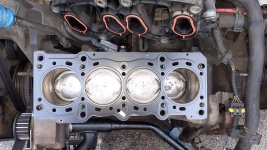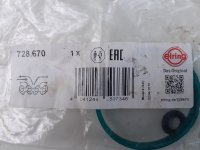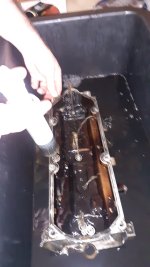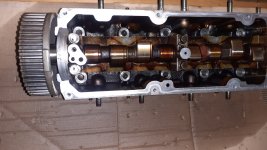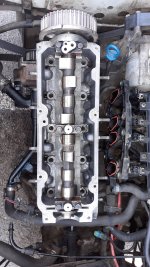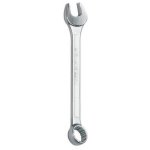As for the very oily intake manifold and MAP sensor, that is a different problem that I think I very recently solved on my Punto, after I had it for many years and I was told by a mechanic that that is "normal behavior" for Fiat.
So, doing some work on the CH, I also got to clean the rocker cover and was looking for a fix to this oily intak as I never rest assured that that's quite normal behavior.
And I discovered that the oil channels up in the cover were clogged. Did that by pushing diesel into the oil channel with a big syringe and managing to unclog it so.
The mechanics: the oil pump sends through one chanell oil under pressure up in the cover and it should go to the camshaft in those 3 points of contact where shaft sits on head. The brackets have orings for contact with the cover so that oil should go straight in to camshaft, no spilling around. And also, up there, beside those channels that carry oil to camshaft are other little openings that shoot oil to the valves areas and also near the oil channel is the system that collects the vapors and carries them to intake through the breather.
Having the oil channel blocked, first of all the lubrication of the camshaft is not done. That leads to overheating of camshaft and head in that point and premature burning of oil. Exces vapors gets carried inside the intake and most likely also are oil drops if there is spillage up in the cover.
I think that my engine was like this when I bought it because I noticed the over burning marks left on the shaft and on the head. Also, untill now, I always had a problem with oil consumption, it was pretty much or even more so.
And for the oil on the spark plugs, it can get on from inside. That's why I got to do work on the head, firstly to replace the valve stem seals. They were really worn out on all valves, probably due to improper lubrication on the camshaft and surroundings and over heating. With them in that state I had a lot of oil going inside the combustion chambers, part of it getting burned during engine running, but also part of it being spilled on the plugs threads during compression. I don't think that is the case on yours,
@PacoJones by the way your plugs look, but I'm saying it is posibil for oil to get on the plug thread from inside and that is how.


